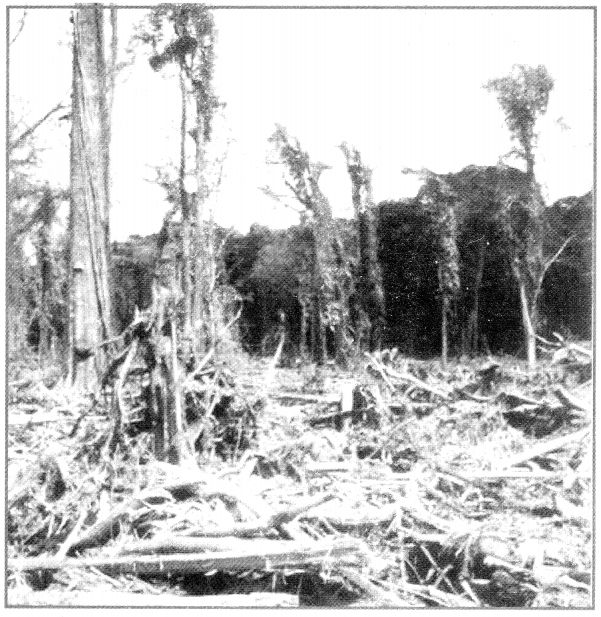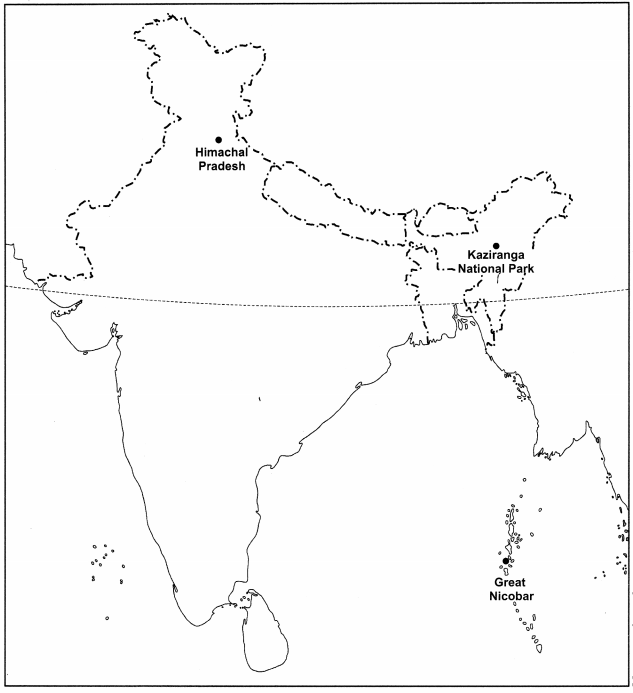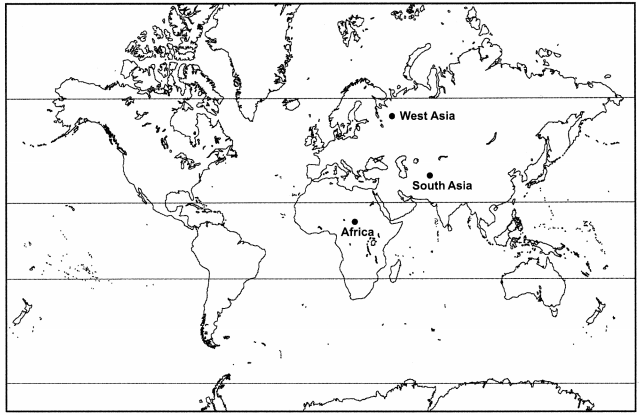Land, Soil, Water, Natural Vegetation and Wildlife Resources Class 8 Geography Chapter 2 Extra Questions and Answers Social Science CBSE Pdf free download are part of Extra Questions for Class 8 Social Science. Here we have given NCERT Extra Questions for Class 8 Social Science SST Geography Chapter 2 Land, Soil, Water, Natural Vegetation and Wildlife Resources.
You can also practice NCERT Solutions for Class 8 Geography Chapter 2 Questions and Answers on LearnInsta.com.
Class 8 Geography Chapter 2 Extra Questions and Answers Land, Soil, Water, Natural Vegetation and Wildlife Resources
Land, Soil, Water, Natural Vegetation and Wildlife Resources Class 8 Extra Questions and Answer Geography Chapter 2 Very Short Answers Type
Question 1.
What is the full form of CITES?
Answer:
CITES is the Convention on International Trade in Endangered Species of Wild Fauna and Flora.
Question 2.
Define National Park?
Answer:
National Park is a natural area designated for the protection of ecological integrity of one or more ecosystem for the present and the future generation.
Question 3.
Name the classification of forests depending on when they shed their leaves?
Answer:
Forests are broadly classified as evergreen and deciduous depending on when they shed their leaves.
Question 4.
Primarily on what factors does the growth of vegetation depends upon?
Answer:
The growth of vegetation depends primary on temperature and moisture.
Question 5.
Why is river Yamuna getting polluted?
Answer:
River Yamuna is getting polluted due to sewage, industrial effluents and garbage released into it.
Question 6.
What quantity of water does a dripping tap waste in a year?
Answer:
A dripping tap water 1200 litres of water in a year.
Question 7.
What are the two major threats to soil as a resource?
Answer:
Soil erosion and depletion are the major threats to soil as a resource.
Question 8.
How much time period is required for the formation of just one centimetre of soil?
Answer:
It takes hundreds of years to make just one centimetre of soil.
Question 9.
Which natural resource covers only about 30% of the total area of the earth’s surface?
Answer:
Land
Question 10.
What is the main reason behind the uneven distribution of population in different parts of the world?
Answer:
It is mainly due to varied characteristics of land and climate.
Question 11.
On what basis land is classified into private land and community land?
Answer:
On the basis of ownership.
Question 12.
What has led to large scale destruction of forest cover and arable land?
Answer:
Growing population and their ever growing demand have led to a large scale destruction of forest cover and arable land.
Question 13.
Why is Hazard Mapping done?
Answer:
Hazard mapping is done to locate areas prone to landslide.
Question 14.
What determines the type of soil?
Answer:
Landform determines the type of soil.
Question 15.
In which year does the consumption of water for human use was 3850 cai/year?
Answer:
In 1975.
Question 16.
Why is Earth appropriately called water planet?
Answer:
Because 3/4th of the earth’s surface is covered with water.
Question 17.
What percent of fresh water is present on Earth?
Answer:
Only about 2.7%.
Question 18.
What is the major problem faced by the world today?
Answer:
Access to clean and adequate water sources is a major problem faced by the world today.
Question 19.
On what does the growth of vegetation depends primarily?
Answer:
The growth of vegetation depends primarily on temperature and moisture.
Question 20.
Give some examples of species protected under CITES.
Answer:
Bears, dolphins, cacti, corals, orchids and aloes, etc.
Land, Soil, Water, Natural Vegetation and Wildlife Resources Class 8 Extra Questions and Answer Geography Chapter 2 Short Answers Type
Question 1.
What is soil and how is soil made fertile?
Answer:
The thin layer of grainy substance covering the surface of the earth is called soil. It is closely linked to land. Landforms determine the type of soil. Soil is made up of organic matter, minerals and weathered rocks found on the earth. This happens through the process of weathering. The right mix of minerals and organic matter make the soil fertile.
Question 2.
What does the weathering mean and how does the weathering help soil?
Answer:
Weathering is the breaking up and decay of exposed rocks by temperature changes, frost action, plants, animals and human activity and soil is made up of organic matter, minerals and weathered rocks found on the earth. This happens through the process of weathering.
Question 3.
How does the major factors of soil formation play an important role?
Answer:
The major factors of soil formation are the nature of the parent rock and climatic factors and
- Parent Rock: Determines colour, texture, chemical properties minerals, content, permeability.
- Climate: Temperature, rainfall influence rate of weathering and humus.
- Relief: Altitude and slope, determine accumulation of soil.
- Flora, Fauna and Microorganism: Affect the rate of humus formation.
- Time: Determines thickness of soil profile.
Question 4.
What are some broad mitigation techniques of landslide?
Answer:
Some broad mitigation techniques of landslide are as follows:
- Hazard mapping for locating lanslides prone area, so that building settlements can be avoided.
- Construction of retention wall to stop land from slipping.
- Increase in the vegetation cover to arrest landslide.
- The surface drainage control works to control the movement of landslide along with rain water and spring flows.
Question 5.
How is the land classified on the basis of ownership? What is the concept of common property resources?
Answer:
Land can be classified on the basis of ownership as private and community land. Private land is owned by the individuals whereas, community land is owned by the community for common uses like collection of fodder, fruits, nuts or medicinal herbs. These community lands are called common property resources.
Land, Soil, Water, Natural Vegetation and Wildlife Resources Class 8 Extra Questions and Answer Geography Chapter 2 Long Answers Type
Question 1.
What is a land and what is the concept of Land use?
Answer:
Land is among the most important natural resources. It covers only about thirty per cent of the total area of the earths’s surface and all parts of this small percentage are not habitable.
Land Life
Land is used for different purposes such as agriculture, forestry, mining, building houses, roads and setting up of industries. This is commonly termed as Land use. The use of land is determined by the physical factors such as topography, soil, climate, minerals and availability of water. Human factors such as population and technology are also important determinants of land use pattern.
Question 2.
Describe Landslide and Mitigation mechanism in brief.
Answer:
Landslides are simply defined as the mass movement of rock debris or earth down a slope. They often take place in conjunction with earthquakes, floods and volcanoes. A prolonged spell of rainfall can cause heavy landslide that can block the flow of river for quite some time.
The formation of river blocks can cause havoc to the settlements downstream on its bursting. In the hilly terrain landslides have been a major and widely spread natural disaster that often strike life and property and occupy a position of major concern.
Mitigation mechanism is the advancement in scientific techniques which has empowered us to understand what factors cause landslides and how to manage them.
Picture Based Questions Class 8 Geography Chapter 2 Land, Soil, Water, Natural Vegetation and Wildlife Resources
Look at the picture given below and answer the following questions:

1. What does the picture show.
2. Under which category is Tsunami placed?
Answer:
1. The picture shows the loss of rainforest in Great Nicobar after Tsunami.
2. Natural factors accelerating the process of extinction of resources.
Map Skills Class 8 Geography Chapter 2 Land, Soil, Water, Natural Vegetation and Wildlife Resources
Question 1.
On an outline map of India mark the following:
(i) Kaziranga National Park
(ii) Himachal Pradesh
(iii) Great Nicobar
Answer:

Question 2.
On an outline Map of the world mark the regions of the world where there is scarcity of water.
Answer:
